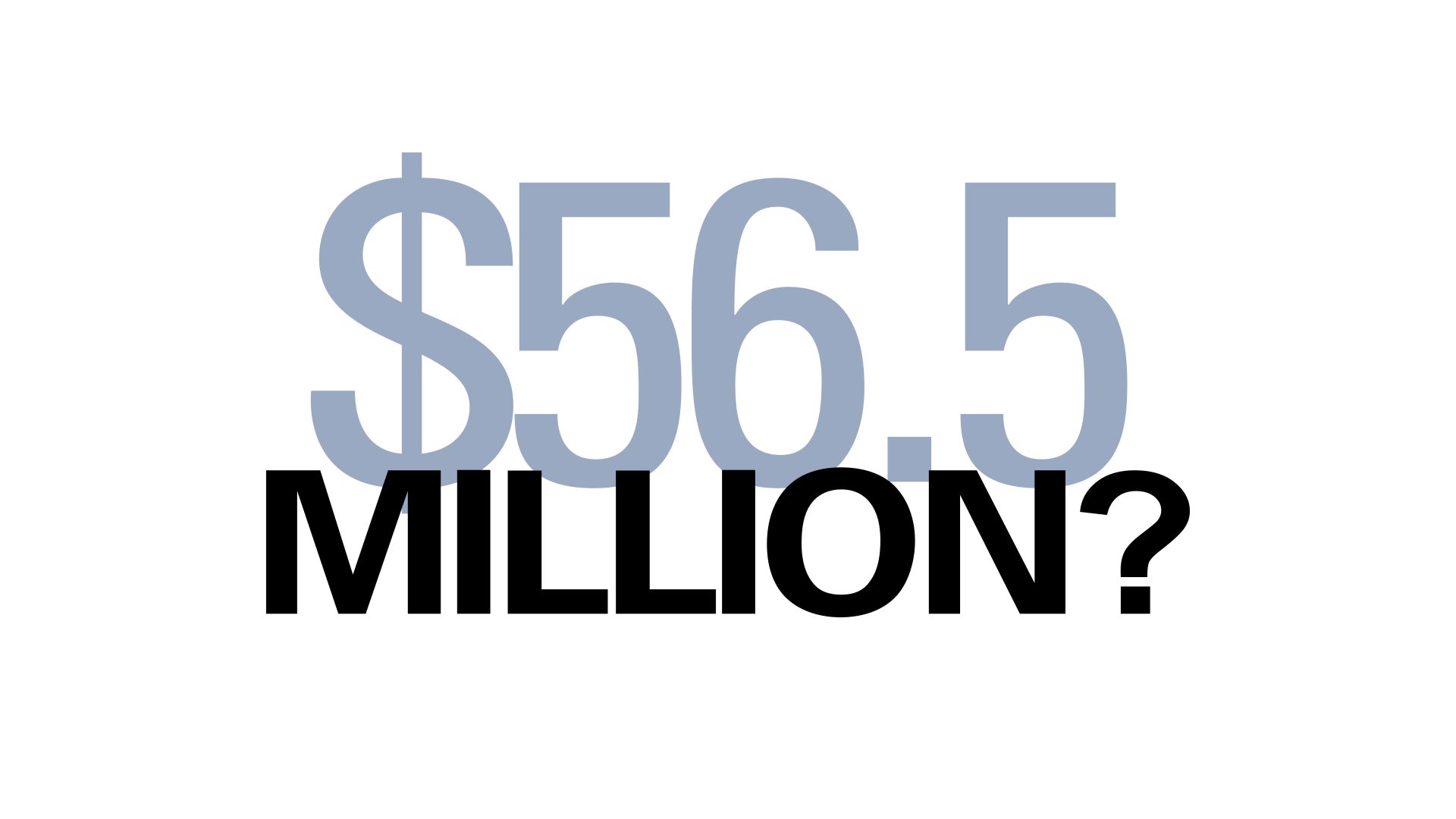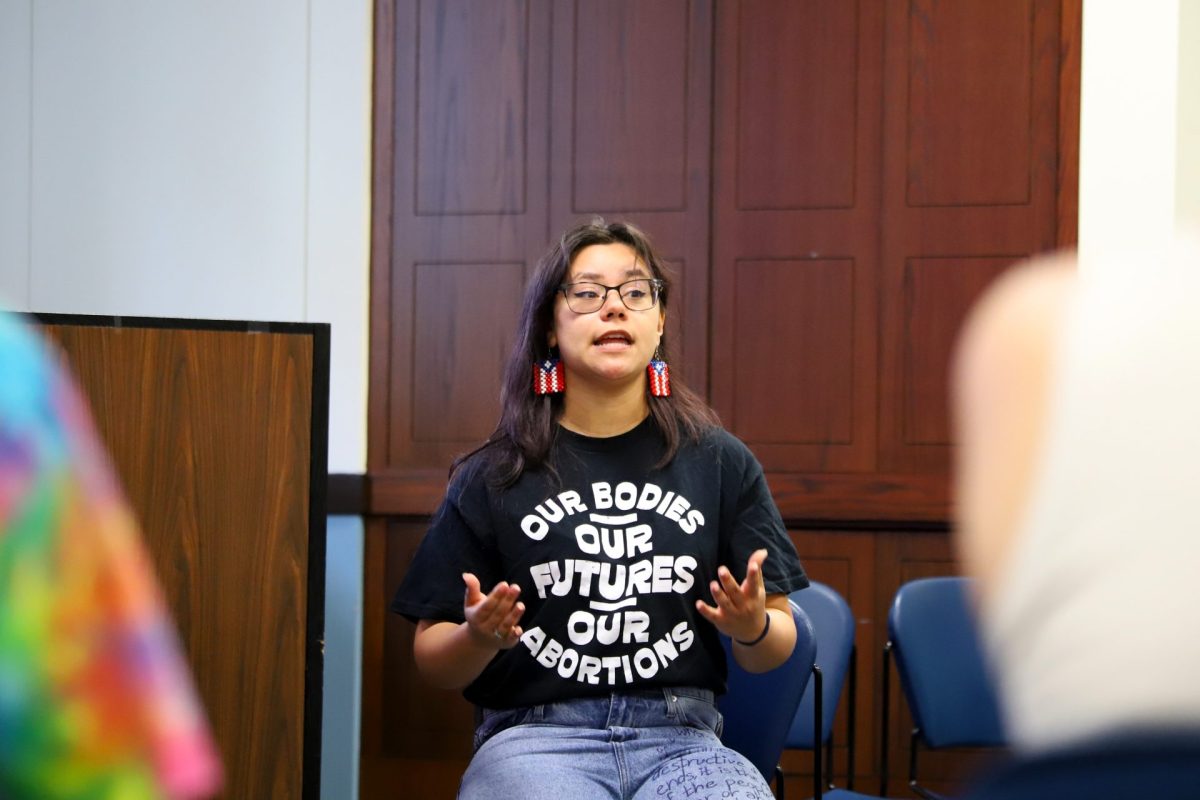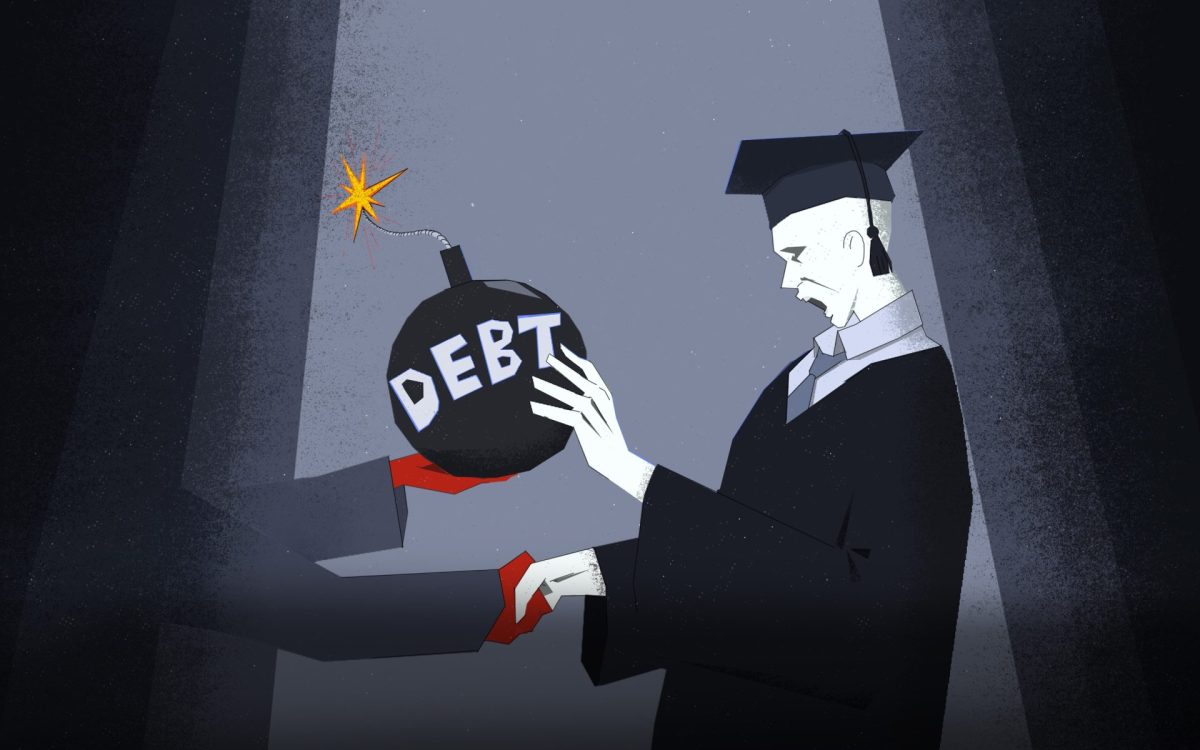An external analysis brought in by a group representing some DePaul faculty claims that the university is in solid financial condition despite last year’s projected $56.5 million budget gap from the administration.
DePaul’s American Association of University Professors (AAUP) chapter crowdfunded to bring Howard Bunsis to present his findings in mid-November, shortly before the holiday break. Bunsis is an accounting professor at Eastern Michigan University and former chair of the American Association of University Professors’ Collective Bargaining Congress and has given similar presentations at other universities such as Marquette and Columbia University.
Within his two-hour-long presentation, Bunsis provided his own overview of the university’s finances, covering total assets, investments, reserves, bond rating, faculty composition and salaries compared to peer institutions.
Bunsis, the university and at least one financial expert contacted by The DePaulia agreed that the future looks bright for DePaul. But Bunsis and university officials disagree about whether faculty cuts made last spring to help close a projected $56 million budget gap were necessary.
Speaking to an audience of 130 faculty, students and staff, Bunsis claimed that DePaul is financially sound and deemed the six faculty cuts “unnecessary.”
In light of the projected budget gap, several non-tenure track faculty positions were not renewed for the following school year. Some staff members also partook in the Voluntary Separation Incentive Program (VSIP), which offered eligible participants one year of gross wages paid in a lump sum, among other benefits.
Bunsis reflected on how the university framed the crisis as “gloom and doom” in the spring and has remained too cautious, even as the university is bouncing back, post-pandemic.
“Overall, DePaul is in solid financial condition…. I just don’t see how any cuts need to be made,” he said.
Winifred Curran, an urban geography professor and AAUP member who initiated the GoFundMe to pay for Bunsis’ services, expressed satisfaction with his findings.
“The biggest thing is that we are not in dire straits and that we’re relatively stable,” Curran said. “So let’s not cry wolf before it’s necessary, and instead, let’s have constructive conversations about how to move forward.”
Several factors contributed to the university’s budget gap, including a decline in enrollment, the exacerbation of financial challenges by Covid-19 and a shortened evaluation period for the Strategic Resource Allocation Committee (SRAC) to assess the budget gap and develop strategies to address it.
According to DePaul President Robert Manuel, the gap between the university’s revenue and expenses was closed as of September.
In a statement to The DePaulia, Manuel and his staff agreed with some points Bunsis made, and disagreed with others. The university agreed that there needs to be a focus on retention, that DePaul is financially stable, and that endowment investments are “appropriately balanced.”
Manuel and the administration said in a statement to The DePaulia that they disagreed with Bunsis on the following:
- Professor Bunsis overstates the university’s ability to convert its net assets into cash to close a budget gap.
- Professor Bunsis incorrectly attributes DePaul’s increasing discount rate to the receipt of student Higher Education Emergency Relief Funds.
- Professor Bunsis assumed that between fiscal year 2019 and fiscal year 23, DePaul’s spending on instructional salaries and benefits declined.
- Professor Bunsis used expenses from only the FY22 to FY23 time period to conclude that DePaul significantly increased its spending on institutional (administration and staff) salaries.
- Professor Bunsis incorrectly stated that the faculty on the university’s Strategic Resource Allocation Committee were hand-picked by the administration.
In an interview with The DePaulia, Bunsis challenged the “pessimistic” narrative DePaul pushed about their projections.
“Their projections going out to the end of the decade suggest that the university is about to go to a place that may be the end,” he said. “I’ve done over 100 of these. This is the most gloom and doom I’ve ever seen from an administration.”
Bunsis, who has done internal audits at various universities across the country, alleges a common trend nationwide – that spare funds within university systems that could be used for hiring faculty and improving salaries are being hoarded by administrators to expand administration and increase their own pay. He used external sources of data from federal 990 tax forms, the Integrated Post Secondary Education Data System and Institutional Research & Market Analytics for his research instead of DePaul’s budget.
Nathan J. Daun-Barnett, a higher education finance expert at the University of Buffalo, sees validity in both Bunsis’ and the university’s perspectives.
“I think both parties are right, and I think they don’t necessarily disagree on where they stand right now. Where they differ is on the future,” Daun-Barnett said. “And I probably differ from Howard in terms of his interpretation of the future. I saw some indicators in there that suggest it is now the time to start preparing for a leaner time.”
Daun-Barnett highlighted the university’s declining enrollment, dropping from 14,816 undergraduates and 7,130 graduates in fall 2017-2018 to 14,374 undergraduates and 6,378 graduates in fall 2023-2024. Enrollment is trending upward again. But the loss of students during the pandemic, coupled with a rise in tuition discounting, has raised concerns about the future financial health of DePaul.
“There are lots of institutions in much worse shape, so I don’t overstate that … but we have to be cautious about where we’re going,” Daun-Barnett said.
Bunsis said he finds the same pattern in “almost every single” institution.
“I report what I think a lot of people implicitly surmise,” Bunsis said. “There (are) significant resources at these universities and they’re not spending them the right way.”
Daun-Barnett suggested that while Bunsis’ conclusions may not be inaccurate, they likely align with the idea that the AAUP hired him to support a particular conclusion.
“He’s worked with the AAUP before, he’s got a formal relationship and AAUP has a position; they are a political entity that is designed to protect the rights of faculty,” Daun-Barnett said. “That doesn’t mean he’s wrong.”
AAUP committee member Marcy Dinius, an English professor at DePaul, advocates for incorporating Bunsis’ budget presentation in future discussions.
“I’m concerned that the administration may keep forging ahead with a kind of relentless austerity, regardless of what the reality is,” Dinius said.


















